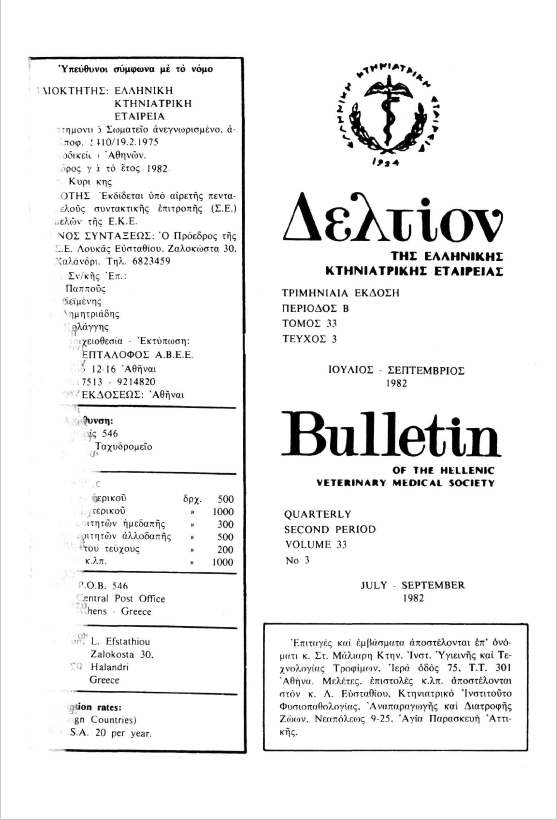Salmonella contamination frecuency in imported feeding stuffs
Abstract
In the present study the Salmonella contramination incidence of the imported feeding stuffs in the North Greece during the years 1976-1980 was investigated. The microbiological techniques as well as the results of the present investigation are presented. It was proved that a Salmonella contamination problem in this Country does exist, particularly with serotypes which have been isolated for the first time. From 990 examined samples of feeding stuffs (fishmeal, meat meal and feather meal) 56 samples were found positive for Salmonella (positiveness 5,65%). The results of the present study are compared with those of other respective studies and the probabilities of the dispersion and contamination of the animals as well as of their derivative foods are discussed too.
Article Details
- How to Cite
-
ΒΟΓΙΑΖΑΣ Δ. Σ., ΠΑΝΝΑΚΟΥΛΑΣ Δ. Γ., & ΨΑΝΝΗΣ E. Π. (2019). Salmonella contamination frecuency in imported feeding stuffs. Journal of the Hellenic Veterinary Medical Society, 33(3), 260–270. https://doi.org/10.12681/jhvms.21550
- Issue
- Vol. 33 No. 3 (1982)
- Section
- Articles

This work is licensed under a Creative Commons Attribution-NonCommercial 4.0 International License.
Authors who publish with this journal agree to the following terms:
· Authors retain copyright and grant the journal right of first publication with the work simultaneously licensed under a Creative Commons Attribution Non-Commercial License that allows others to share the work with an acknowledgement of the work's authorship and initial publication in this journal.
· Authors are able to enter into separate, additional contractual arrangements for the non-exclusive distribution of the journal's published version of the work (e.g. post it to an institutional repository or publish it in a book), with an acknowledgement of its initial publication in this journal.
· Authors are permitted and encouraged to post their work online (preferably in institutional repositories or on their website) prior to and during the submission process, as it can lead to productive exchanges, as well as earlier and greater citation of published work.



